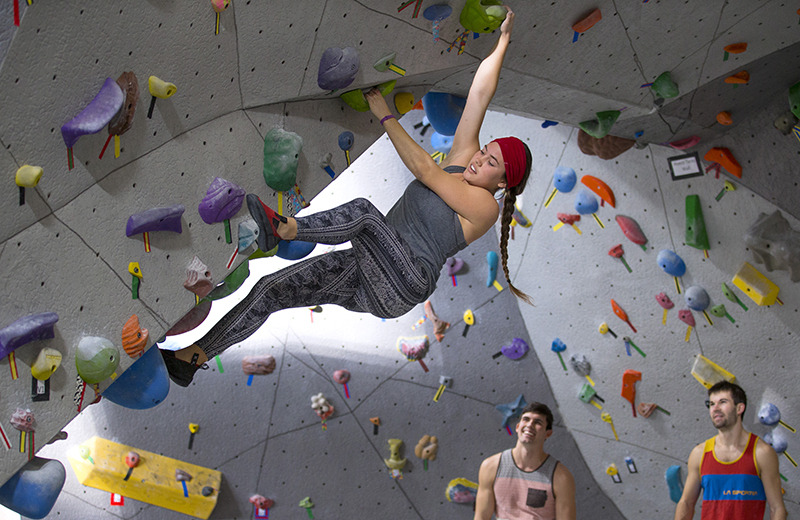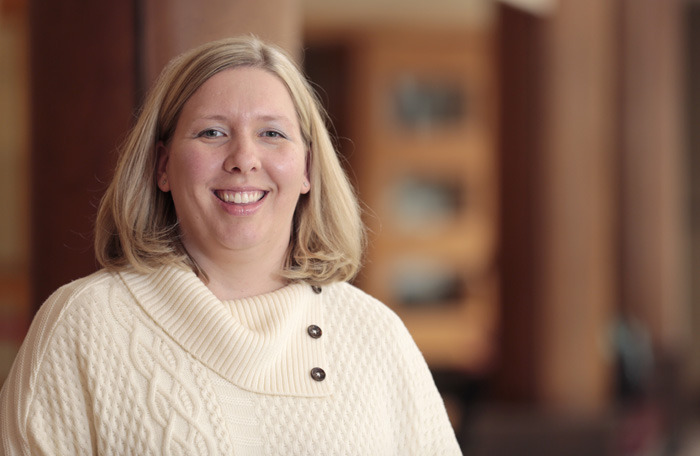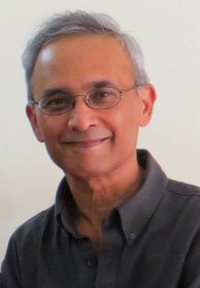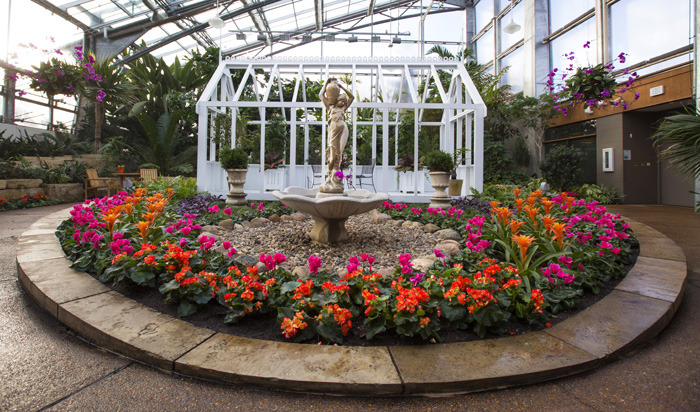Hold tight

Senior Michelle VanRoekel of Adel ascends the the bouldering wall at the Lied Center. It is open climb and offers a higher degree of difficulty with its overhangs and large arch. Photo by Christopher Gannon.
This summer, the popular climbing wall at the Lied Center was gutted and transformed. Now open, the remodeled space contains a dedicated bouldering wall -- a climbing option that does not require ropes or harnesses.
Doug Arrowsmith, recreation services' assistant director for facilities, said Lied's former climbing wall was deteriorating and outdated. The new bouldering wall gives climbers another option to the 40-foot climbing wall and 12-foot bouldering wall in State Gym. Users of Lied's 16-foot high wall can work on free-climbing techniques and routes, with a 2-foot thick floor pad to cushion falls.
"A new bouldering wall was much needed by the growing climbing community at ISU," said Nathan Rector, coordinator of outdoor recreation. "With so few places to climb in Iowa, and the sport of climbing growing so fast, it is hard to keep up with the demand. Having all three of these facilities available to the student population makes ISU very unique in its ability to offer so much climbing to students."
Changes intended to improve students' graduation experience
Improving the graduation experience for students, their families and friends is the intent behind changes to the undergraduate colleges' recognition events this May. College deans and President Steven Leath have approved the changes, proposed by a working group that in July began its review of commencement weekend.
A key change assigns time in Hilton Coliseum for four of the six undergraduate colleges to recognize their students without a limit on guest numbers. In some cases, colleges had outgrown the convocation spaces they were using and were unable to accommodate all the family members and friends who hoped to attend. The four colleges – Agriculture and Life Sciences, Business, Human Sciences, and Liberal Arts and Sciences – will hold events up to 90 minutes long in Hilton Friday afternoon and evening and Saturday morning.
The colleges of Engineering and Design, where the tradition is to host smaller, informal events according to department or program, will continue to hold those events in their college spaces.
School's out at noon
Two broader scheduling changes will support the college events at Hilton. Final exams will conclude by noon on Friday, and the Graduate College's commencement ceremony will move from Friday evening to Thursday evening.
Senior associate registrar Jennifer Suchan said Iowa State's enrollment growth has impacted both college and all-university graduation events, with more graduates attracting more guests and adding to their length. She said the evolution of college events in some cases created confusion for families about which event truly was their student's "graduation."
So, some graduation traditions that had crept into the college events instead will be reserved for the all-university graduation ceremonies. These include:
- Caps and gowns (graduating students should dress in business professional attire for their college events)
- Keynote speaker
- Conferring of diplomas/diploma covers
- Identifiers such as commencement, graduation or ceremony
Schedule of events
The spring schedule of college recognition events is:
Friday, May 6 (all at Hilton Coliseum)
- Human Sciences: 2 p.m.
- Business: 5 p.m.
- Liberal Arts and Sciences: 8 p.m.
Saturday, May 7
- Agriculture and Life Sciences: 8:30 a.m., Hilton Coliseum
- Design: 8:30 a.m. and 11 a.m., organized by degree program, College of Design Building
- Engineering: 8:30-11 a.m. (various times and campus locations), nine convocations organized by department
The three university ceremonies are:
- Graduate commencement ceremony, Thursday, May 5 (7:30 p.m., Hilton Coliseum)
- (Unchanged) Veterinary Medicine commencement ceremony, Saturday, May 7 (noon, C.Y. Stephens Auditorium)
- (Unchanged) Undergraduate commencement ceremony, Saturday, May 7 (1:30 p.m., Hilton Coliseum)
Suchan said the registrar's staff also is looking at options for tweaking the commencement ceremonies – for example, the processionals, number of speakers, logistics for conferring degrees -- with an eye on trimming the ceremony duration.
"We'll continue to look for ways to refine and improve the experience for our students, their families and friends," she said.
The graduation working group included registrar Laura Doering, associate provost and Graduate College dean David Holger and deans Pam White (Human Sciences) and David Spalding (Business).
P&S staff: Check your position description
Accessing your position description
- Log in to PeopleAdmin with your Net-ID and password
- Select the "My Profile" tab
- Select "Position Descriptions" tab
- Select your position
If you're a professional and scientific employee, University Human Resources (UHR) staff recommend logging in to PeopleAdmin and reviewing your position description with your manager. Standard job factors for each classification were added and previous job factor language, often written for specific positions, will disappear in the coming months.
"This standardized language -- approved by the Board of Regents in 1993 -- replaced the specific job factors for individual positions, which previously were written by employees and managers," said Emma Mallarino Houghton, director of classification and compensation.
Where to look
Human resource specialist Kyla Kaetzel said employees and managers should review the "job factors" section of the position descriptions to determine if the previous language would be more appropriate elsewhere, such as the summary of duties and responsibilities.
P&S employees and managers can access position descriptions through PeopleAdmin. The individualized text is available in the "Job Factors" area (scroll down to the third section). Kaetzel said position description reviews and changes -- if necessary -- should happen during this year's performance review cycle. The individualized text will be eliminated no later than June.
Staff also can view (but not edit) the standardized language in the "classification" section at the top of the position description.
"This will allow all P&S staff an opportunity to review their current position description with the job factors that were written by the employee or the manager, in relation to the standard job factors," Mallarino Houghton said.
Job factors vs. job duties
The job duties, which help determine classification (for example, a research analyst or residence hall coordinator), describe position responsibilities and can be unique. The job factors -- which include complexity, innovation, impact on institutional mission, internal interactions, external interactions and leadership -- determine the position pay grade (P-level).
The standard job factors are identical by classification. For instance, all employees who are classified as an academic adviser II will share the same standard job factors, regardless of which college or department hired the employee.
Annual reviews: Make it a habit
Kaetzel encouraged employees to review their position descriptions with supervisors as part of the annual performance evaluation process.
Questions about P&S position descriptions can be directed to college and division human resources liaisons (directory), or to UHR classification and compensation staff (email).
Welcome

Photo by Christopher Gannon.
Erin Baldwin joined Iowa State Jan. 4 as director of the Thielen Student Health Center. She is responsible for the strategic planning of Iowa State's student health, including administrative structure, patient access and critical care needs. She also will work with staff to develop financial and management strategies for the clinic.
Baldwin comes to Iowa State from Mahaska Health Partnership, Oskaloosa, where she served as chief operating officer. She holds master's degrees in healthcare administration and public health from the University of Iowa (2006).
Baldwin's office is in the Thielen Student Health Center. She can be reached at 294-4420 or baldwine@iastate.edu.
Senate considering department merger
A reorganization that merges two departments in the College of Liberal Arts and Sciences was introduced at the Jan. 19 Faculty Senate meeting. Senators will vote next month on a proposal to combine the anthropology and world languages and cultures departments.
Discussions about a merger began among faculty in late 2014, with unanimous approval from faculty in both departments in December 2015. If approved, the department would retain the world languages and cultures (WLC) name, effective July 1. According to the planning document, anthropology would become a WLC program, and personnel and equipment will transition to Pearson Hall as space becomes available.
On the horizon
Senate president Rob Wallace said faculty working groups have been or will be formed to study several topics, including:
- A committee to conduct an annual review of an administrative office; this year it is the senior vice president for business and finance (chaired by Distinguished Professor emeritus John Schuh)
- A task force on enrollment management, which will look at issues such as program enrollment limits, the regents admission index and differential tuition (chaired by president-elect Jonathan Sturm; report due by June to President Steven Leath)
- A task force on non-tenure eligible faculty issues, such as position descriptions, career paths and review procedures
Other business
- Tim Day, professor of biomedical sciences, won a two-person ballot to become the 2016-17 senate president-elect. Day and current president-elect Jonathan Sturm (music) will assume their new posts at the May 3 meeting.
- Sarah Nusser, vice president for research, presented an update on the research mission. She said grant proposal counts were up 12 percent in fiscal year 2015 and are up 10 percent this year.
Rao named associate VP for research

Guru Rao
Guru Rao, Roy J. Carver Professor in biochemistry, biophysics and molecular biology (BBMB), has been named associate vice president in the office of the vice president for research, effective Feb. 15.
Rao will focus on working with faculty to engage federal and industry funding opportunities, develop interdisciplinary research teams in response to emerging federal priorities, and build relationships with current and prospective research sponsors.
"I'm pleased that Guru will join the leadership team in our office," said Sarah Nusser, vice president for research. "Guru's outstanding research and leadership experience will be invaluable in helping faculty to grow their own programs and in advancing the scope and impact of Iowa State research."
Rao joined the Iowa State faculty in 2006 after 18 years as a researcher and senior research leader at DuPont Pioneer. He was appointed interim chair of the BBMB department in 2007 and since 2009 has served as chair.
"I'm excited to take on this new role, and I look forward to the opportunity to help build on Iowa State's research strengths as well as move into new areas of national priority," Rao said.
Rao was selected in an internal search. This associate VP for research position previously was held by Chitra Rajan, who left Iowa State in July.
Talk safety at your next staff meeting
This is the second of a two-part series on staying safe at Iowa State. Tips come from ISU police officers -- interim chief of police Aaron DeLashmutt and deputy chief Carrie Jacobs, Lt. Elliott Florer and officer Anthony Greiter.
ISU police officers have a new agenda item for staff meetings all over campus. It's a safety discussion, in which colleagues and office mates figure out what they'll do if disaster -- in the form of fire, medical emergency, violence or something else -- shows up in their buildings.
Periodic safety discussions are one of the most important ways workers can prepare for a crisis in the office or the classroom. ISU police suggest that these topics be covered in those discussions:
- Where emergency exits are located
- Whether a building's windows can be opened
- What the plan is for evacuating the building
- Who should make the call to emergency personnel
- Where to hide if the exit is blocked by a violent intruder
In the classroom
Classroom safety starts with important safety information included in syllabi. Additionally, instructors should have first-day discussions with students on what they should do and where they should go in emergencies.
Every classroom includes an emergency response guide. The poster contains emergency numbers and bullet points on responding to fire, severe weather, violent incidents and other urgent situations. Classrooms also include maps with evacuation routes and other emergency info. The same information for every facility on campus is available on the building information website.
Best training resources
Safety information, ranging from training sessions by ISU police to online videos and presentations, is readily available to the university community. These are recommended by ISU police:
- Emergency response video. This 8-minute video, produced by environmental health and safety and public safety, provides useful tips for responding to campus emergencies, including violent incidents. It's a good conversation starter for a staff discussion on workplace safety.
- Recognizing and reporting disturbing behavior. ISU police offer this training, upon request of ISU groups and units. The focus is on recognizing warning signs of potentially violent behavior. This session is considered a precursor to the violent incident response training (below). To schedule the one- to two-hour training for a group, contact deputy chief Carrie Jacobs at 294-9848.
- Violent incident response training. ISU police have given this popular three-hour training to 146 groups over the past three years. The training focuses on the ALICE (Alert, Lockdown, Inform, Counter, Evacuate) method of dealing with violent encounters. For scheduling and information, contact Lt. Elliott Florer at 294-4428.
Safer than most municipalities
ISU police note that Iowa State has many safety-related features and services that don't exist in most municipalities. Examples include:
- The ISU Alert mass notification system
- Free safety escort services
- Emergency phones
- Outdoor warning sirens with voice capability
- Automated external defibrillators (AEDs)
- Electronic card access for many buildings
- Residence hall cameras, door peepholes and safety screens on many first-floor windows
All of that, of course, doesn't ensure safety. ISU police advise everyone to occasionally think about the unthinkable -- what would I do in a dangerous situation? Having an action plan already in mind could be life-saving.
Related stories
ISU Police: If it doesn't seem right, report, Jan. 14, 2015
A sampling of spring lectures
Instead of spending your evenings flipping channels or binge-watching the latest Netflix must-see, attend a couple (or several) lectures on campus instead. There's an array of topics to explore, with a few highlighted below. Check out the complete list of lectures online. All programs are free and open to the public.
"Women Who Don't Wait in Line," Reshma Saujani, Jan. 28 (8 p.m., Great Hall, Memorial Union)
Saujani is the founder and CEO of Girls Who Code, a national nonprofit organization that works to close the gender gap in technology and prepare young women for future jobs. In her new book of the same title, Saujani proposes a new model of female leadership that focuses on embracing risk and failure, promoting mentorship and sponsorship, and boldly charting your own course, both personally and professionally.
Saujani's presentation is the keynote lecture in a year's worth of events celebrating the 30th anniversary of Iowa State's Program for Women in Science and Engineering.
Panel discussion, "Iowa Caucuses 2016: What Happened and What's Next?" Feb. 2 (1 p.m., MU Campanile Room)
A panel of ISU faculty will analyze the caucus results and discuss implications for the 2016 presidential campaign for both parties. Panelists are Dianne Bystrom, director of the Carrie Chapman Catt Center for Women and Politics, who has spent 30 years covering, working in and studying political campaigns; and David Andersen, assistant professor of political science, who researches voter behavior and the impact of social media on campaigns. Steffen Schmidt, University Professor of political science, will moderate the discussion.
"My Holocaust Story: A Message of Determination, Perseverance, Faith and Hope," Marion Blumenthal Lazan, Feb. 8 (7 p.m., MU Great Hall)
Lazan provides a first-hand account of her family's life in Germany during World War II, from the events leading up to Kristallnacht, to their imprisonment in concentration camps (including Bergen-Belsen) and their liberation in April 1945, when she was 11 years old. Lazan is the coauthor of Four Perfect Pebbles: A Holocaust Story and the subject of the PBS documentary Marion's Triumph.
"How to Succeed Ethically When Others Bend the Rules: The VW and GM Scandals," Frank Bucaro, Feb. 25 (8 p.m., MU Great Hall)
Bucaro is a senior ethics adviser and content provider for the Automotive Institute of Ethics, and an ethics content provider for Compliance Velocity, a mobile app for pharmaceutical companies. He works with the world's leading companies on the importance of ethics and the power of value-based leadership. His talk highlights companies like Volkswagen and General Motors as examples of the problems and consequences that arise when ethical behavior is not defined. Bucaro is the author of Trust Me! Insights into Ethical Leadership, and is known for his training programs about building business practices that are both responsible and profitable.
"Technology in 2025: Designing the Future," Brian David Johnson, March 29 (8 p.m., MU Great Hall)
Johnson is the futurist-in-residence at Arizona State University's Center for Science and the Imagination, and a professor in the School for the Future of Innovation in Society. He was the first futurist at Intel Corp., where he worked for a decade designing more than 2 billion microprocessors. As an applied futurist, Johnson works with governments, militaries, trade organizations, start-up companies and multinational corporations to help them develop actionable 10- to 15-year visions. In his work, called futurecasting, he uses ethnographic field studies, technology research, cultural history, trend data, global interviews and science fiction to provide companies with a roadmap of the future.
"The Future of Water: Assessing Sustainability from Space," Bridget Scanlon, April 21 (8 p.m., MU Sun Room)
Scanlon heads the Sustainable Water Resources Program and is a senior research scientist for the Bureau of Economic Geology at the University of Texas, Austin. She studies the impact of climate variability and land use change on groundwater recharge (the way water enters an aquifer) and the quality and quantity of water resources. Her research uses Gravity Recovery and Climate Experiment (GRACE) satellite, surface water and groundwater data to evaluate ways to deal with drought, especially in California, Colorado and Texas.
Nature's colorful display

"Orangery" kicks off Reiman Gardens' 2016 theme, Color. Photo by Christopher Gannon.
Color will permeate Reiman Gardens in 2016 with a plethora of exhibits dedicated to nature's wide range of colors. Simply titled Color, the gardens' theme launched Jan. 18 with the opening of "Orangery" (pronounced "or-RAHN-juh-rie") in the Hughes Conservatory. Descriptions of this exhibit and others follow. For a complete listing and more details, visit the Reiman Gardens website. Regular admission prices apply.
An ode to orange
While the color orange is prevalent in this exhibit, the title is a nod to 17th-century Europe's orangeries, or elaborate greenhouses, which were used to shield citrus trees from harsh winters. In addition to citrus trees and orchids, the exhibit contains a 10-by-15-foot orangery designed and built by the gardens' staff. The exhibit runs through April 17.
LEGO sculptures return
The popular "Nature Connects: Art with LEGO Bricks" exhibition, which debuted at the gardens in 2012, returns this year with 13 new, nature-inspired sculptures, again created by artist Sean Kenney. Using roughly 500,000 bricks, Kenney's works will include a herd of deer, a gardener and grandchild, a monarch butterfly, a wheelbarrow and a birdbath among other items often found in gardens. The exhibit opens April 22 and runs through Oct. 31.
Live Technicolor
"In Living Color" will feature the vibrant colors and patterns that attract insects -- and people -- to plants. The exhibit will be in the Hughes Conservatory April 22 through Aug. 21.
Tulip time
"Rainbow Connection" is a tribute to tulips from mid-April through May 9, with more than 47,000 blooms. Over 40 tulip varieties will grace the Campanile Garden, while the Herb Garden will feature an array of red and pink tulips. The Children's Garden will be blanketed with bright, bold-colored blooms, and a rainbow of tulips will greet visitors in the South Field.
Summer-into-fall displays
Several garden displays will be unveiled May 9 and continue through Oct. 15, including:
- "Color and the Cottage Garden," Campanile Garden
- "Let's Color!" Children's Garden
- "My Colorful Plate," Home Production Garden
- "FluoreSCENT," Herb Garden
- "Blue Ribbon Garden," Trial Garden
- "Prairie Prisms," Stafford Garden
Cyclone colors
The Hughes Conservatory will be adorned with Iowa State colors during "Cardinal and Gold," Aug. 26 through Nov. 13. The display will celebrate nature's version of Cyclone colors, using the tones of deciduous trees and plants during autumn.
Candy land
The Reiman Railroad Express will chug its way through the gardens Nov. 18 through Jan. 8, 2017, for "Sugar and Spice." The trains will make their way through a sweet landscape inspired by holiday candies and food.
